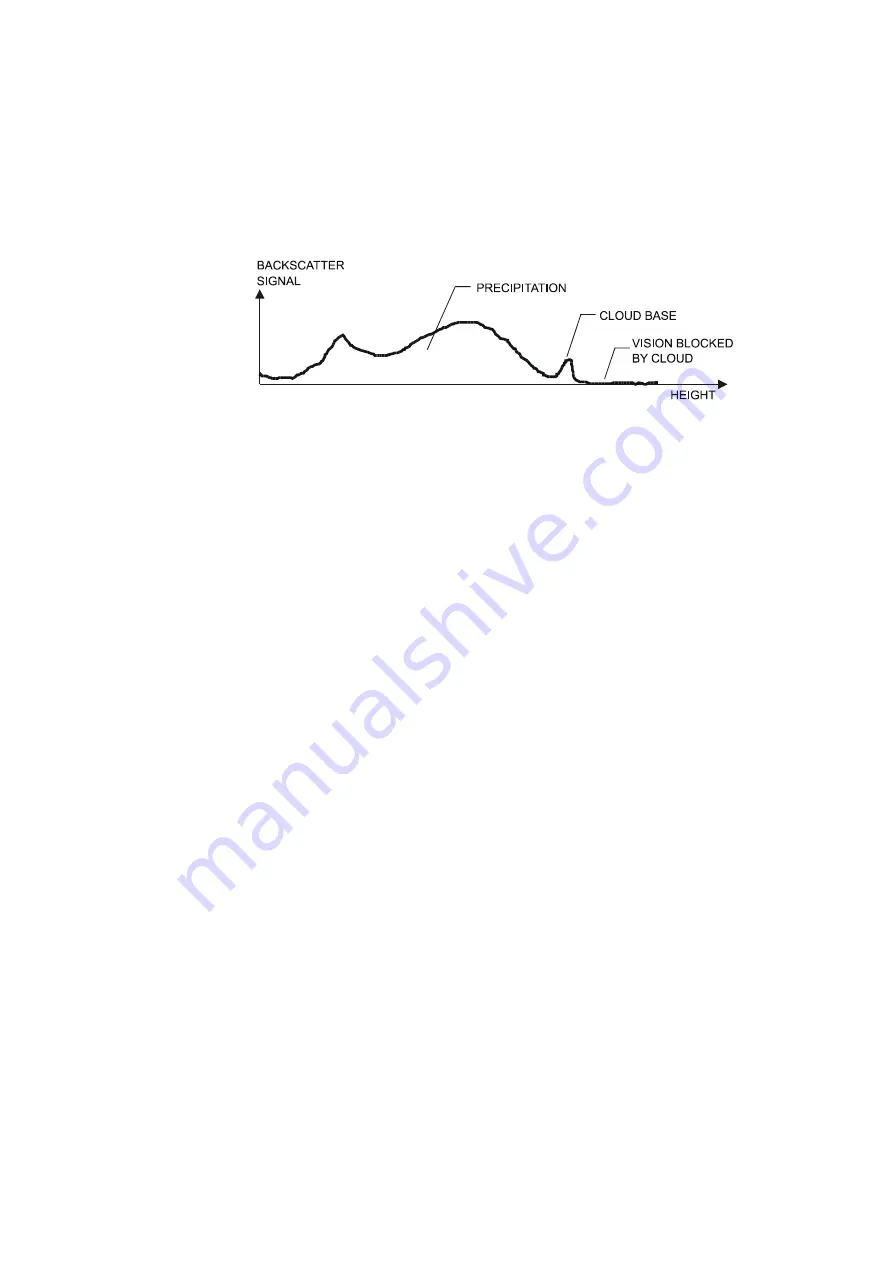
User's Guide ______________________________________________________________________
74 __________________________________________________________________ M210482EN-B
Practical Measurement Signal
Generally, particles at all heights backscatter light, and so the actual
return signal may look like that shown in Figure 16 below.
9807-047
Figure 16
Typical Measurement Signal
The instantaneous magnitude of the return signal will provide
information on the backscatter properties of the atmosphere at a
certain height. Information about fog and precipitation, as well as
clouds, can be derived from the return signal. Since fog and
precipitation attenuate the light pulse, the cloud base signal will
appear lower in magnitude in the return echo. However, the fog and
precipitation information also provides data for estimating this
attenuation and computing the necessary compensation, up to a limit.
In its normal full-range operation, Ceilometer CL31 digitally samples
the return signal every 33 or 67 ms from 0 to 50 µs, providing a spatial
resolution of 5 or 10 m feet from ground to the distance of 25000 feet.
This resolution is adequate for measuring the atmosphere, since
visibility in the densest clouds is of the same order.
Noise Cancellation
For safety and economic reasons, the laser power used is so low that
the noise of the ambient light exceeds the backscattered signal. To
overcome this, a large number of laser pulses are used, and the return
signals are summed. The desired signal will be multiplied by the
number of pulses, whereas the noise, being random, will partially
cancel itself. The degree of cancellation for white (Gaussian) noise
equals to the square root of the number of samples; thus, the resulting
signal-to-noise ratio improvement will be equal to the square root of
the number of samples. However, this processing gain cannot be
extended endlessly since the environment changes and, for example,
clouds move.
















































